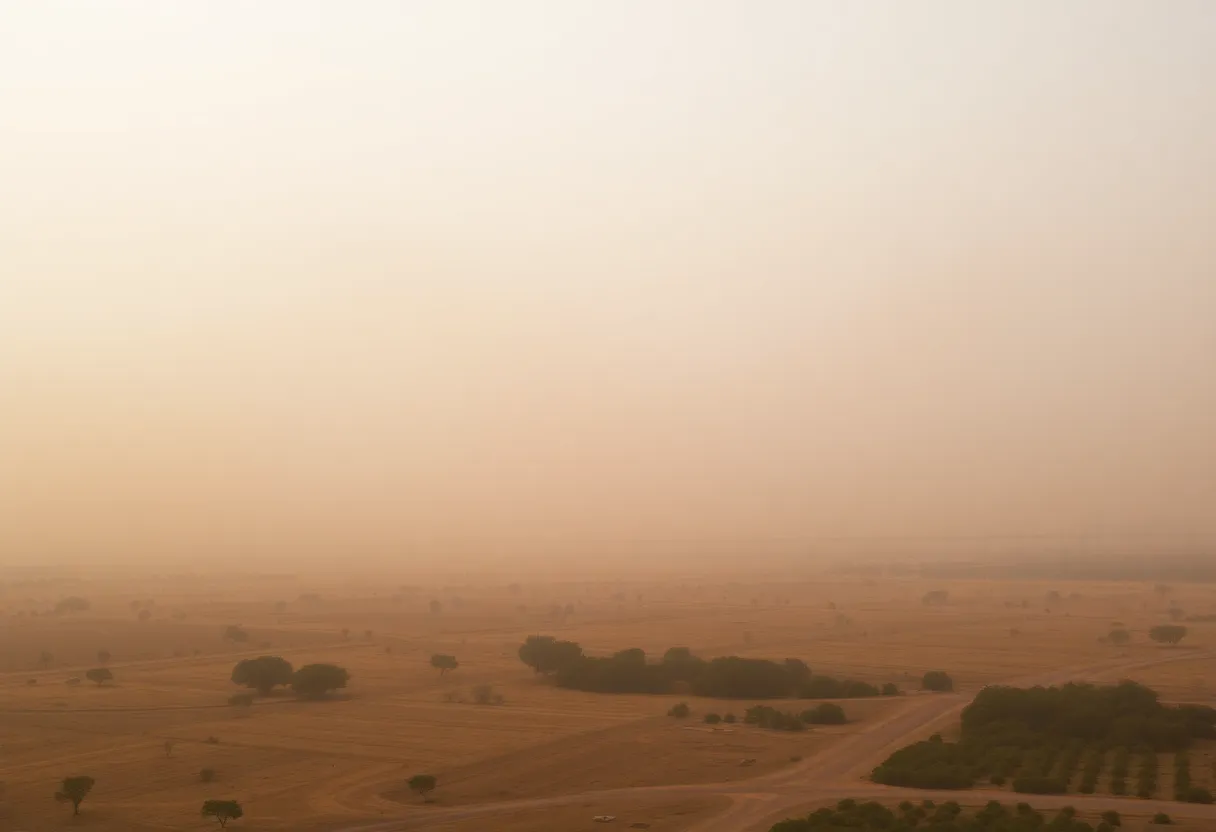News Summary
A significant cloud of Saharan dust is predicted to affect air quality across Texas this weekend, with the worst concentrations expected early next week. The dust plume, originating from the Cape Verde Islands, will lead to hazy skies and could pose health concerns for sensitive individuals. Major Texas cities, including San Antonio, Austin, and Houston, are likely to experience reduced visibility. While allergy flare-ups may occur, forecasters are closely monitoring the situation as additional dust events are expected in the coming week.
Houston, Texas – A significant cloud of Saharan dust is set to impact air quality and visibility across Texas starting this weekend, with the highest concentrations expected early next week. This extensive dust plume originates from the Cape Verde Islands off the coast of Senegal and is traversing the Atlantic toward the eastern Caribbean.
By late afternoon on Sunday, the initial effects of the dust are expected to reach the Texas Gulf Coast. As the plume progresses, the air quality in major Texas cities like San Antonio, Austin, Corpus Christi, Houston, and the Dallas-Fort Worth metroplex will likely decline slightly as a result of the airborne dust particles.
The increase in airborne dust will lead to hazy skies and potentially spectacular sunsets. Forecasts indicate that Tuesday and Wednesday will see the most substantial concentrations of Saharan dust entering Texas, followed by a significant decrease in dust levels by Friday.
Health Precautions for Residents
Allergy flare-ups such as eye and throat irritation may occur, and people in affected areas should stay informed about the air quality index levels as the dust arrives.
Forecast and Environmental Impact
The Saharan dust plume is projected to be more extensive than one encountered earlier this month. As trade winds carry the dust from the east-southeast toward the Gulf of Mexico, the highest concentration currently rests over the Caribbean Sea. The arrival of this dust coincides with lower levels of tropical cyclone activity in the Atlantic, as the dry air from the Saharan dust inhibits storm formation.
The first named tropical storm of the year, Andrea, developed north of the dust’s path but dissipated within 12 hours, indicating how Saharan dust can influence weather patterns.
Future Outlook
Further rounds of Saharan dust are anticipated following this initial influx, which could continue to affect the tropics and potentially limit the formation of tropical systems in the upcoming week. Forecasters are monitoring the situation closely as dust concentrations may linger into midweek.
As the dust plume approaches Texas, residents are encouraged to stay aware of changing air quality conditions and heed health advisories to mitigate any potential health effects from the Saharan dust.
Deeper Dive: News & Info About This Topic
HERE Resources
Houston Faces Severe Weather Alert Impacting Commute
Hazy and Hot Weekend Ahead for Houston
Houston Braces for Extreme Heat This Weekend
Houston Prepares for Hot and Hazy Summer
Houston Ranks Among Worst for Air Pollution in US
Houston Faces Record Oak Pollen Levels This March
Hazy Skies in Houston from West Texas Dust Storm
Houston’s Hazy Skies: Understanding the Recent Fog
Additional Resources
- KVUE News
- Wikipedia: Saharan dust
- Austin American-Statesman
- Google Search: Saharan dust
- Houston Chronicle
- Google Scholar: Saharan dust Texas
- KENS 5 News
- Encyclopedia Britannica: Saharan dust
- Big Country Homepage
- Google News: Saharan dust Texas
- WFAA News








